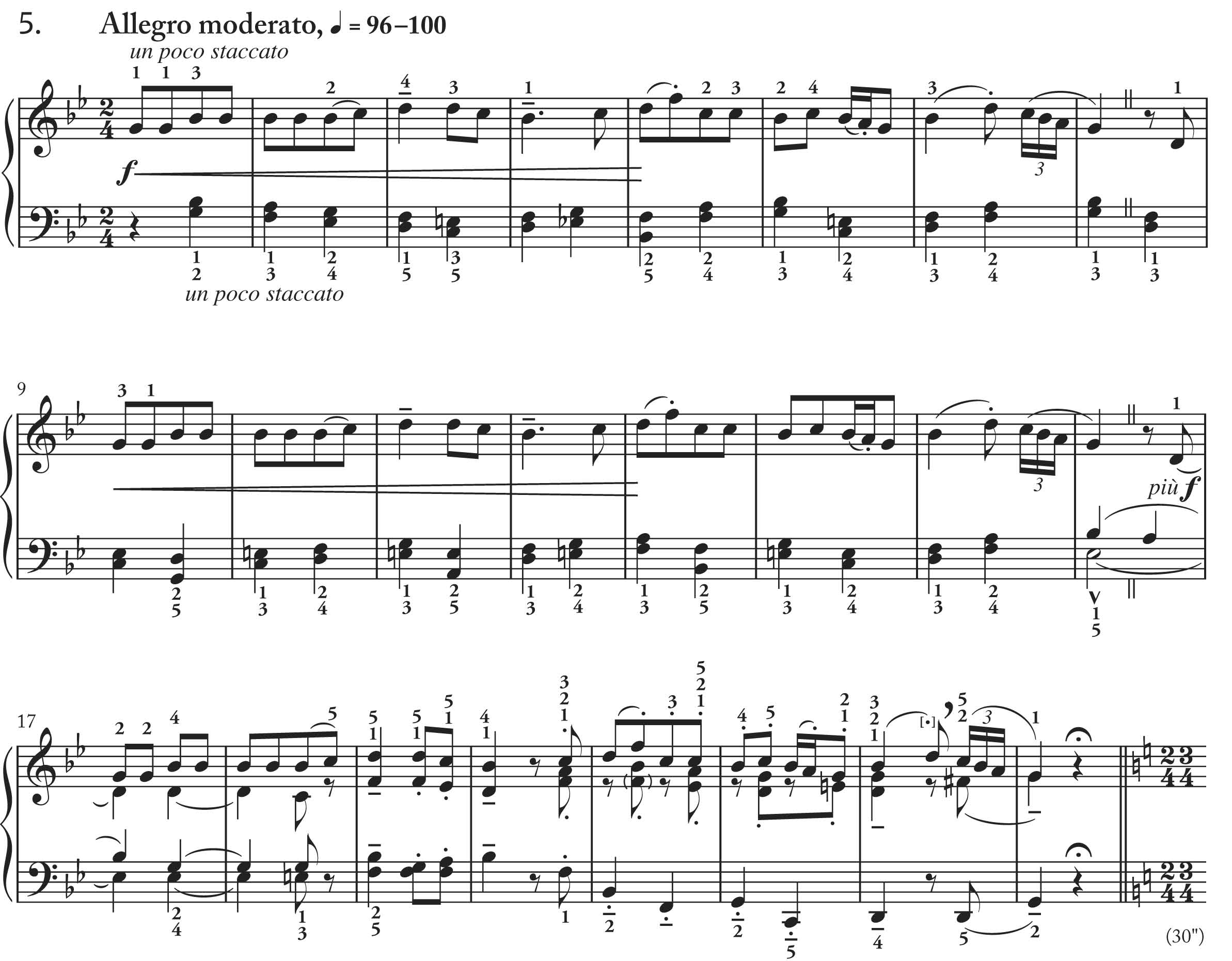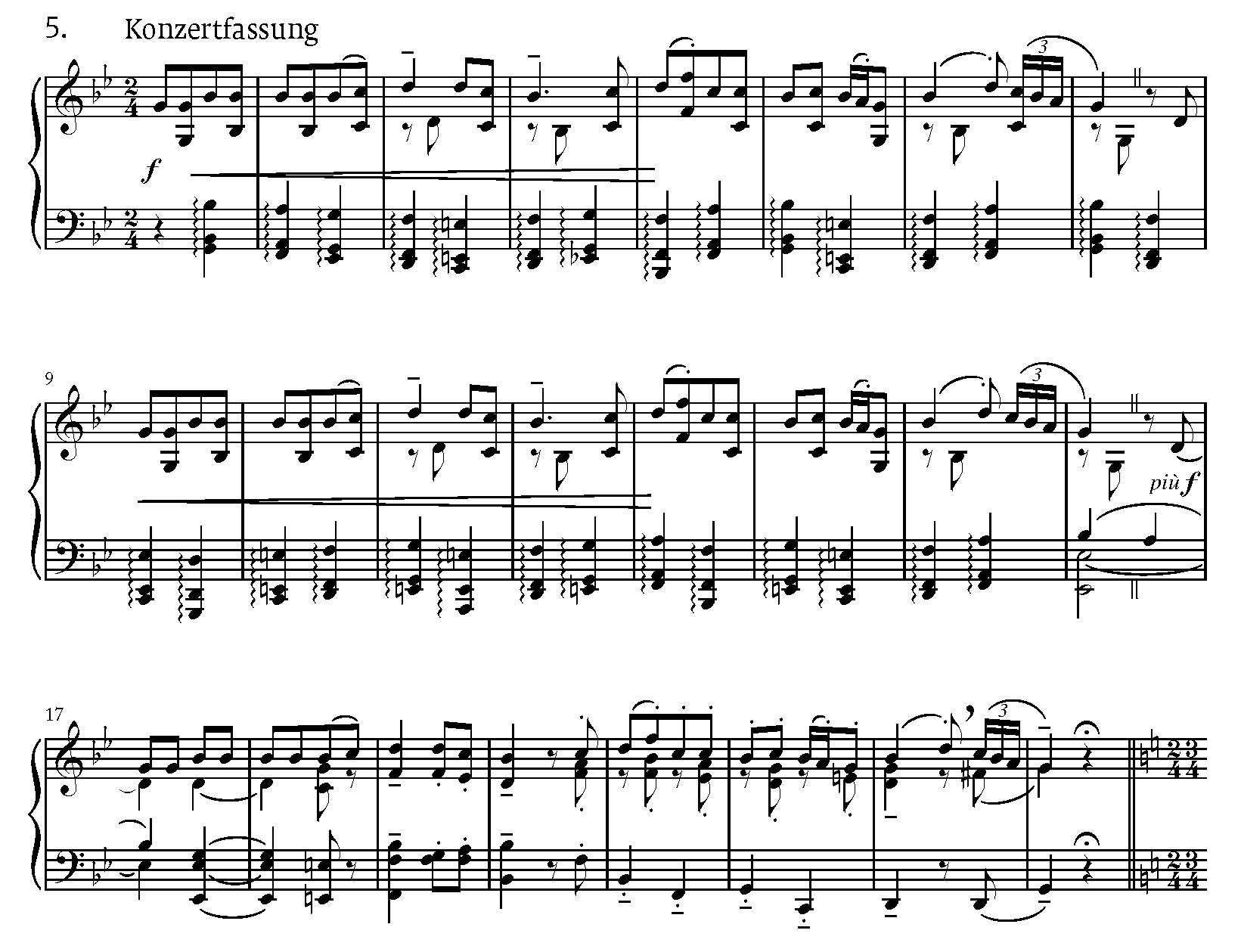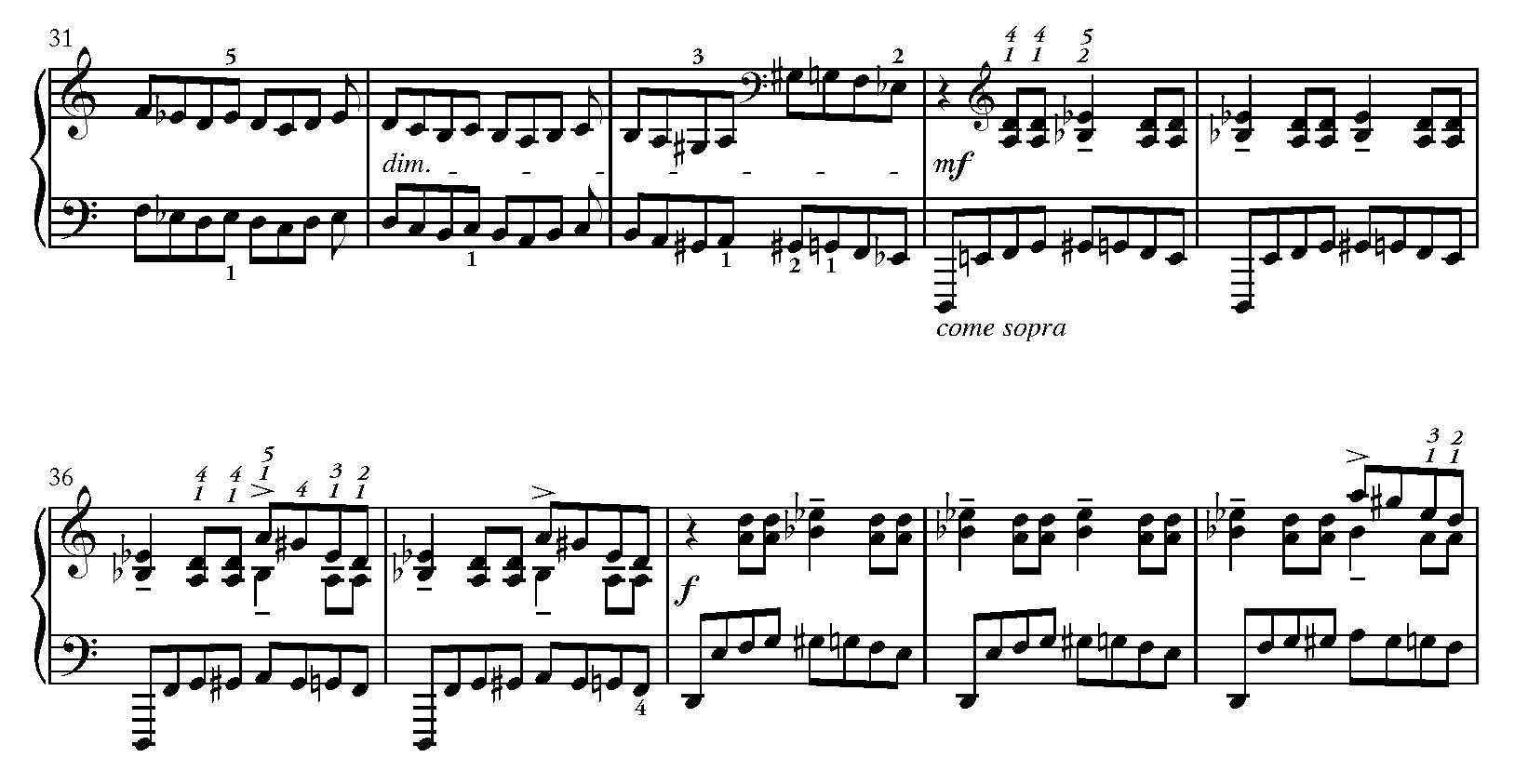To continue my last blog with an overview of our Urtext editions of Bartók’s piano works, I am devoting today’s posting to a small but very significant aspect of these editions: their fingering and performance markings. And I am very happy that this time not only the great Hungarian Bartók scholar László Somfai but also the great Hungarian pianist – and Bartók specialist! – Dénes Várjon shared their opinions with me.
In the opening chapters of his just being prepared complete-edition volume with the Piano Works 1914–1920 (HN 6202), László Somfai details how in those years Bartók developed two quasi systems of piano notation: on the one hand, there is the more pedagogically motivated, instructive marking with meticulous directives for phrasing and articulation, pedalling, and fingering, such as is met with in the Romanian Folk Dances or the Sonatina; on the other, marking supplied for concert performance (and for advanced pianists), in which pedal information and fingering usually appear only where they are decisive for the desired sound impression – an example of this is his Suite op. 14.
Interestingly enough, the Romanian Christmas Songs (HN 1406) provide an example of both “styles”, for here we have the special case of Bartók’s first explicitly creating a work for children’s hands (doing, accordingly, “without octave spans”) in 1918, and later publishing a revised edition with so-called “Änderungen für den Konzertvortrag” (alterations for concert performance), with some numbers growing to the point of being veritable second versions. Compare, for example, No. I/5 marked in the “instructive” and in the “concert-version” styles.
Bartók allocated a major role to the fine and most subtle nuances of accents and phrasing in the performance of his works and developed very precise ideas in terms of their notation during the course of his pianistic life, all of which must be accounted for in our Urtext editions as well as in the Complete Critical Edition. So, each volume of the Critical Edition contains a comprehensive chapter on “Notation and Performance” filling more than a page on just the question alone of “Articulation and Accents”.
But even within our Urtext editions we have incorporated for Bartók a separate extra chapter with “Editorial Notes for the Performer” dealing with phrasing and fingering as well as with questions of tempo and pedalling. Bartók shows how both intermesh in a few, but special places of limited fingering in the Suite op. 14 (HN 1403). So, in the second movement he marks only the final marcatissimo measures in triple forte with 1+2 for every single tone and guarantees there the desired percussive effect.
In the Suite’s third movement at the beginning of the two parts in the right hand (m. 34), there is a fingering that can be interpreted as indicating the desired phrasing in this technically demanding passage. In the complete edition, editor László Somfai states: “Even if his fingering might not be ideal for pianists with smaller or larger hands or with a different technique than Bartók’s, it helps us imagine his own performance in difficult passages.”
The Hungarian pianist Dénes Várjon fully agrees here: “We are very lucky that at some places we have fingerings from Bartók himself. They are extremely important. I also use his fingerings whenever we have them. For me it’s a message from him, bringing us closer to understanding his music. Besides his recordings, everything that he wrote is a most important source of inspiration for the performer.”
Várjon also based his fingering for several of our Bartók editions on this. For in good Henle Urtext tradition, we supply a modern fingering in the works of Bartók’s that are originally only slightly fingered. (For this reason, additionally placed in the second example from the Suite are, besides the italicised figures by Bartók, also figures by Várjon.) And immediately Dénes Várjon is also all on fire for Bartók: “I was very happy and excited when I got the invitation from the Henle publishers to do the fingering for 3 of Bartók’s piano works in their new Urtext edition. It was a great honour and also a great responsibility. Bartók, as a composer, but also as a pianist and human being, has been extremely important to me since my childhood. I grew up with his music and his playing is a constant inspiration for me as a pianist. I also admire the great Bartók researcher Prof. László Somfai, with whom, fortunately, I have often had the chance to talk about Bartók and his music.”
For Várjon, too, the marking of a work goes far beyond a purely mechanical task: “To do fingerings is always a very tricky task. First of all, because I myself sometimes use various fingerings, and as with a performance where I never feel that ‘this was the final version’, it’s the same way I feel as well about my fingerings. We also all have different types of hands, so it’s not easy to find a solution that could work for many pianists. Fingerings, though, are not only practical issues, but show a lot about the performer’s approach, how he or she musically solves a certain passage in the piece. This was for me the most important principle and point of departure.”
Examples of the fingering as a messenger of musical design are numerous in Várjon’s markings. Be it the portato in the left hand at the start of No. 2 from the 15 Hungarian Peasant Songs (HN 1404) or the dying away of the first melody section in m. 40.
The Improvisations on Hungarian Peasant Songs, op. 20, like the Suite, one of Bartók’s most demanding pieces, are unusually heavily marked. László Somfai told me: “The edition of the Improvisations, op. 20, was a real headache. […] Although it is a work appealing to listeners of modern music, preferably in Bartók’s own interpretation, the score – except for the fingering – is full of detailed instructions about touch, phrasing, tempo changes, etc., including errors still remaining in the most recent editions.”
Whereas the correction of errors lay in the best hands with Bartók philologist László Somfai, Bartók interpreter Dénes Varón supplies here the “missing” fingering. At one spot in the opening of No. V, he even goes so far as to alter Bartók’s distribution of hands (1st chord left, 2nd and 3rd chords right) as indicated by the stemming of the chords, by changing the fingering so that the first chord is played with the 3rd fingers of the right and left hands.
In the musical sense, of course, he follows the composer, because the gradation of the accentuation is also guaranteed by this “artifice”. At the same time, the fingering shows his personal access to a work that is one of the pianist’s favourites: “The Improvisations and Suite, op. 14, are my all-time favourite pieces, and I have also performed the 15 Hungarian Peasant songs many times. I just hope to have the chance of continuing this exciting work from which I have also learned so much and which helps me to see even more clearly the complexity and richness of these wonderful works.”










thank you for the article